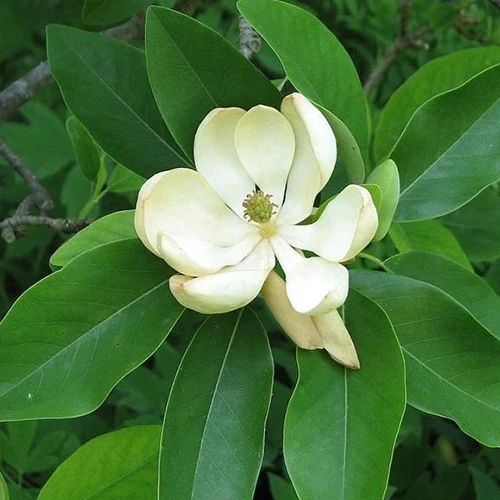Magnolia virginiana
There are hundreds of magnolia species, and each one seems better than the last. But sweetbays have something special going for them.
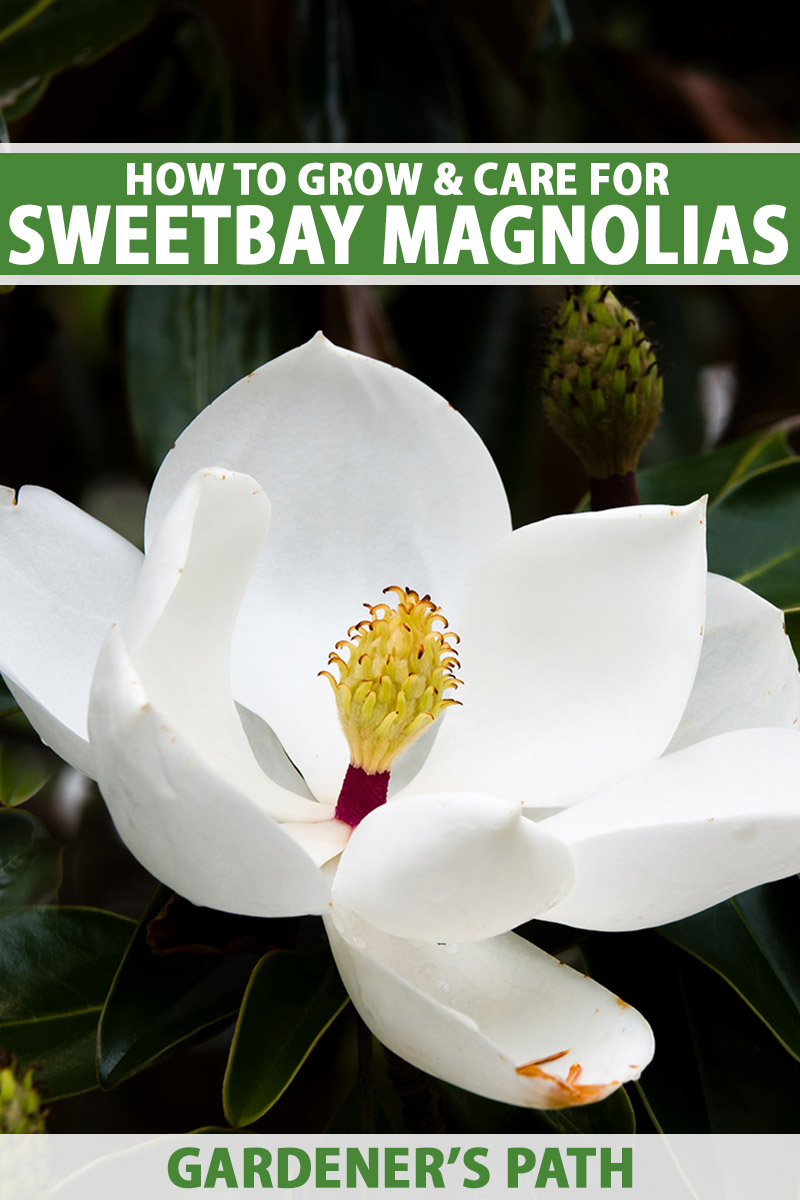
We link to vendors to help you find relevant products. If you buy from one of our links, we may earn a commission.
The silvery underside of the bay-scented leaves is eye-catching as they wave around in the breeze, and the trees grow in an elegant, dense, vase-like shape. This is already a beautiful tree, before we even get to the flowers.
The creamy white blossoms are three inches wide with an appealing lemon scent. They open in late spring after the leaves have formed on the tree.
While they don’t have the super-massive blossoms of other species, and their flowers aren’t as colorful, they’re every bit as marvelous, especially if you have a swampy spot where other things won’t grow.
Here’s what we’re going to chat about to help you get to know these plants:
What You’ll Learn
Her showier cousins, like the southern magnolia, tend to draw all the attention. So it’s about time sweetbay got a moment in the spotlight! Let’s give her some attention.
Cultivation and History
Sweetbay, also called swamp bay, swamp magnolia, swamp laurel, or white laurel, grows natively from the southern tip of Florida ranging as far north as Massachusetts, and as far east as Texas.
In colder regions, like USDA Growing Zones 5 and 6, it’s deciduous and shrub-like with multiple trunks, topping out at eight feet.
In warmer climates, like Zones 8 and 9, it’s evergreen and grows much taller, up to 35 feet tall, with a single trunk.
In the extreme southern part of its range, this species has been known to grow 60 feet tall. And it can reach up to 20 feet wide, depending on the conditions.
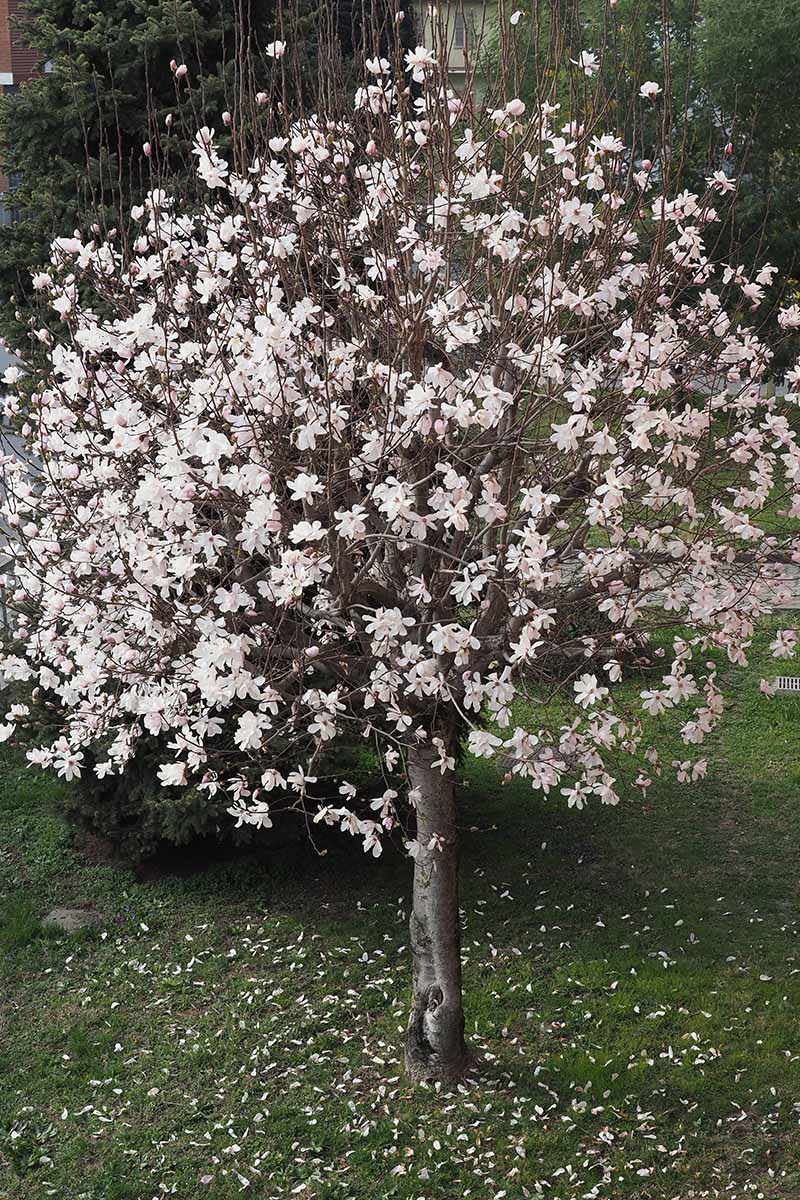
The tree has an extremely graceful, slender form with an open crown, which is part of what makes it such an appealing option for the garden, both at home in North America and abroad.
That’s right, this southern favorite is popular in Europe.
In 1678, British naturalist and missionary Reverend John Banister brought a sweetbay back to England. It was the first magnolia to ever reach those shores.
The Bishop of London, Henry Compton, raised it in the gardens of Fulham Palace, where the sweet-scented blossoms were a hit.
Though the original plant died in 2019, the palace re-planted a new sweetbay with the support of a cheering crowd.
Speaking of those lemony, sweet-smelling flowers, they emerge on the tree later in the season than those of many other species, which means they’re able to dodge some of those late-season frosts that can destroy the blossoms.
They’ll emerge sometime between May and June, depending on where they’re growing, and continue to bloom sporadically throughout the summer.
Hybrids bred using this species can have flowers in shades of pink, but the species and its cultivars all have white flowers.
After the flowers fade, reddish-yellow fruits with red seeds develop. The fruit gradually turns brown and dry, at which point the seeds are ripe for harvesting. Birds and squirrels will eat and spread the seeds.
The semi-glossy leaves also have a sweet scent and look like large bay leaves. The underside is silver and the top is medium green.
As an aside, in 1808, the first hybrid magnolia of any kind documented in Western culture was bred, a cross between a sweetbay and an umbrella magnolia (M. tripetala). M. x thompsoniana continues to be a popular garden tree in the eastern US and Europe.
If the southern magnolias (M. grandiflora) is the grande dame of the South, sweetbay is the humble little sister. The trees are smaller overall and the blossoms are smaller as well.
But if you want something a bit hardier, smaller, and tolerant of wet soil, this type can’t be beat. Bigger isn’t always better.
Sweetbay Magnolia Propagation
Sweetbays can be propagated via all of the standard methods used with magnolias. You can grow them by sowing seed, rooting cuttings, and layering.
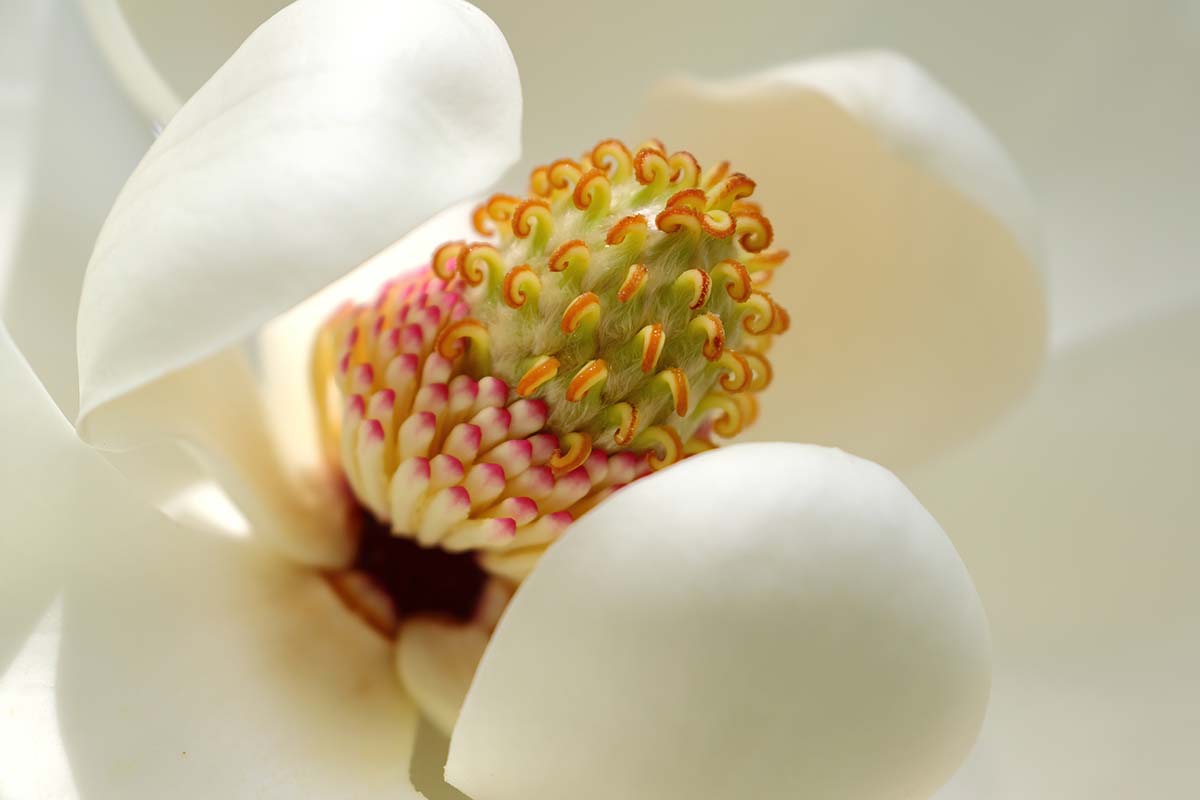
Plants started from seed take much longer than cuttings and air layering to start producing flowers, but all work equally well.
Generally speaking, all sweetbays propagated using one of these methods will start blooming within 10 years, and they will reach their mature size in about 20 years.
For specifics on how to propagate each way, visit our guide to growing magnolias.
Install transplants when the tree is dormant but the ground can be worked in the spring or fall. Place trees at least 10 feet away from any other trees or buildings.
If you purchased a tree, dig a hole twice as wide and the same depth as the root ball. Place the plant in the prepared hole with the top of the root ball just slightly above the soil level.
How to Grow Sweetbay Magnolias
These trees are known as swamp magnolias because they can tolerate wet or swampy ground.
They receive 48 to 64 inches of rain per year in their native range, and that’s about what you want to recreate wherever you plant them.
Water deeply but infrequently and don’t let the soil become too dry between watering.
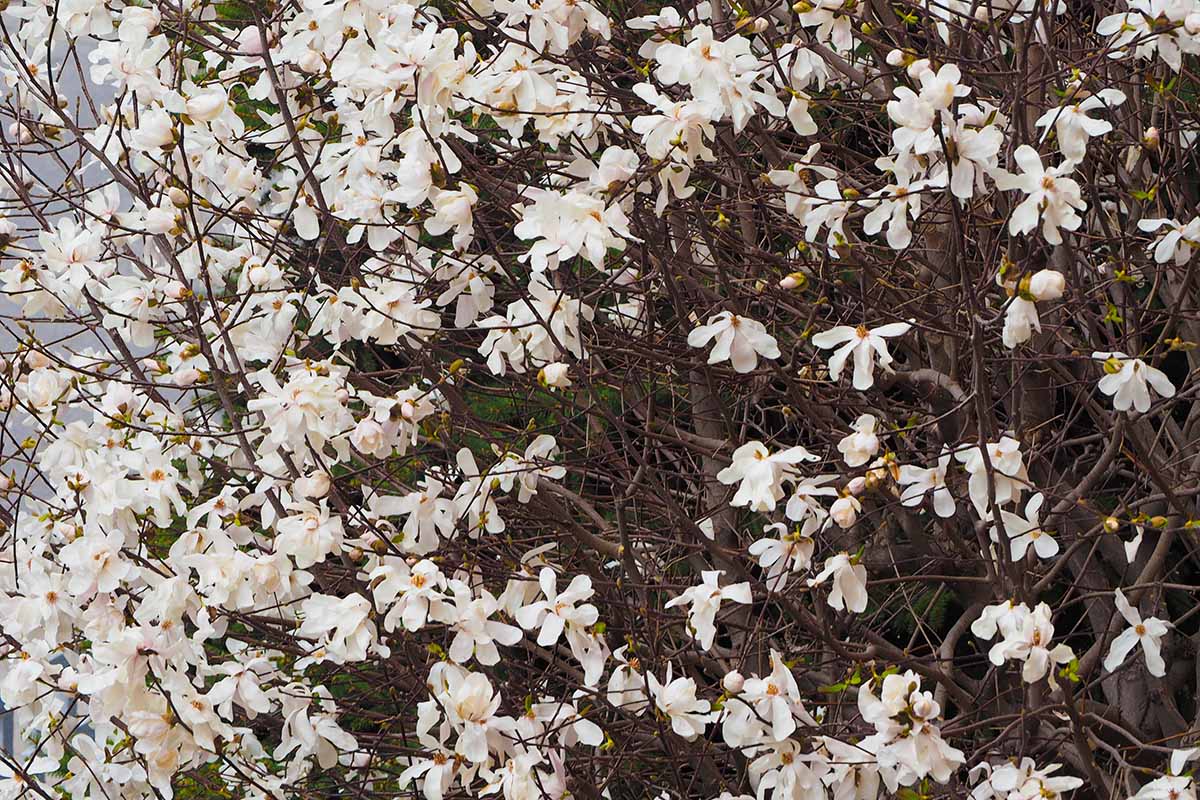
Magnolias don’t draw water from near the soil surface, so it doesn’t help to stick your finger into the soil to determine the moisture level. But if you have a long moisture meter, that can help.
Otherwise, a rain gauge can be useful to tell you how much water the plant has received via precipitation.
What they can’t tolerate is alkaline soil. The soil must be slightly acidic with a pH of 5.5 to 6.5 for these trees to thrive. In soil that’s too alkaline, trees will show signs of chlorosis.
Sweetbays can also tolerate partial shade, with just four hours of sun per day being enough to produce a large floral display.
There’s no need to worry about fertilizing your trees unless your soil is extremely deficient in a certain nutrient. Do a soil test before planting to see what your soil lacks and amend accordingly. You should continue to test and amend your soil every few years.
Don’t use a strong fertilizer because it can burn. Use something mild or slow release, or better yet, some well-rotted manure or compost.
Growing Tips
- Plant in in full sun to partial shade.
- Make sure the tree receives at least 48 inches of water per year.
- Don’t fertilize unless your soil is deficient in something.
Pruning and Maintenance
Magnolias rarely need pruning. But the general rule to remove dead, diseased, or damaged/deformed branches – known as the three Ds – applies.
Any time you see something that looks problematic, remove it as close to the nearest trunk or branch as you can.
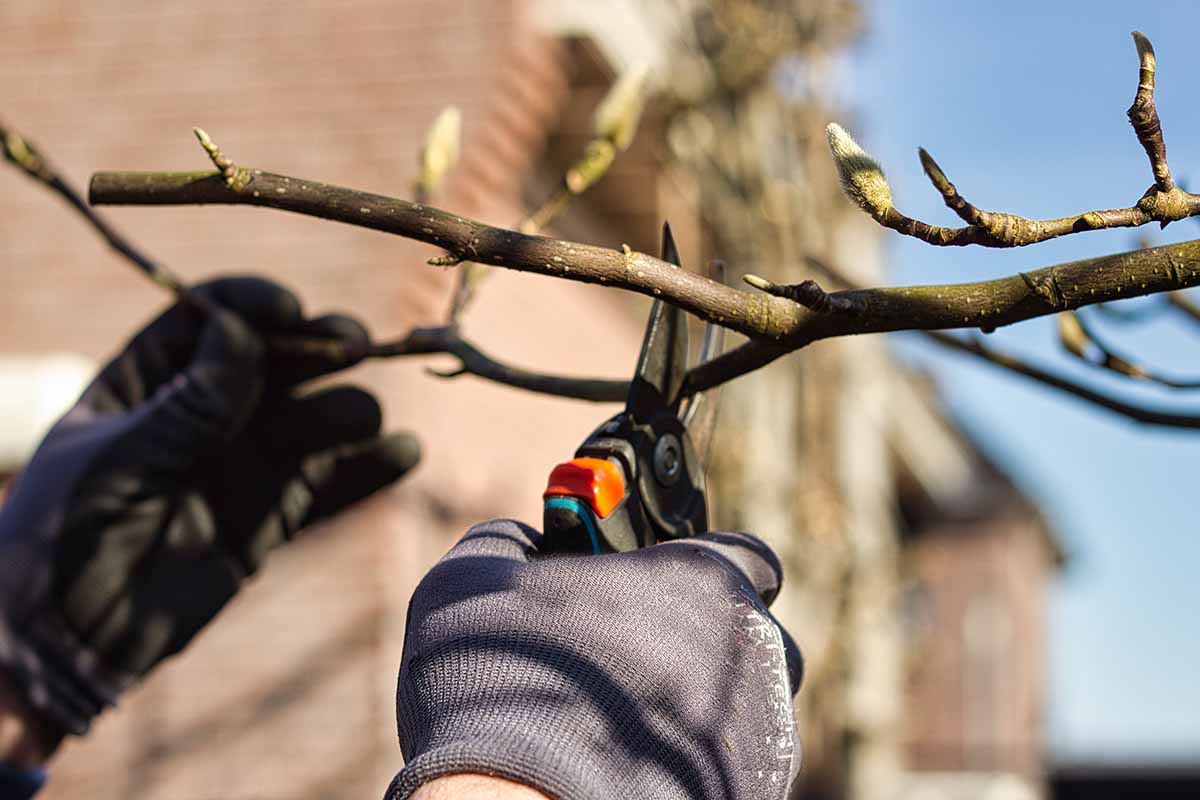
These trees add about a foot or two of growth per year and need pruning to control their size.
If you want to do some pruning for shape, feel free. You can also remove branches that are crossing or crowded, but it’s not necessary.
When they’re young, give them a little shaping by pruning back to a leaf bud after flowering has stopped. If you’re growing a multi-trunk type, limit the trunks to five or less. Remove any shoots growing beyond the main trunk or trunks.
White Laurel Cultivars to Select
There are lots of fun cultivars to watch for, but a lot of the time, you’ll find the species tree.
You can’t go wrong with the species or any one of the excellent options that have been bred and made available for sale.
If you want to grab a species plant, visit Planting Tree for a one- to two-, two- to three-, three- to four-, or four- to five-foot-tall live tree.
Fast Growing Trees carries live trees in similar sizes.
Apalache
This cultivar will stay compact at under 20 feet and is evergreen to Zone 6, which is much colder than the species will tolerate while remaining evergreen.
The leaves are darker green than the species as well.
Henry Hicks
‘Henry Hicks’ is more reliably evergreen than the species. It will stay evergreen even in Zone 5.
It’s an early bloomer and grows to 40 feet high.
Moonglow
‘Moonglow’ is a 40-foot tree with a loose canopy that can survive extreme cold, down to at least -28°F.
This cultivar will stay evergreen further north than the species, down to Zone 6.
Northern Belle
With dark green leaves and a petite growth habit, this pretty lady stands out. She grows to just eight feet tall and 10 feet wide, so she’s perfectly happy in a container.
This is no delicate flower, though. She can survive in temperatures as cold as -35°F and stays evergreen down to Zone 4.
Santa Rosa
The leaves on ‘Santa Rosa’ are larger than the species and the largest of any cultivar.
However, since it was bred from a tree growing in Florida, it isn’t as cold tolerant as some others. It’s best in Zones 7 and up.
The tree has a beautiful rounded, spreading growth habit, reaching 25 feet tall and wide.
Managing Pests and Disease
Ready for some really exciting news? Sweetbays are one of those species that are seemingly unbothered by most problems.
No wonder they’re so popular for creating magnolia hybrids. Everyone wants a bit of that sweet, sweet resistance to pests and diseases.
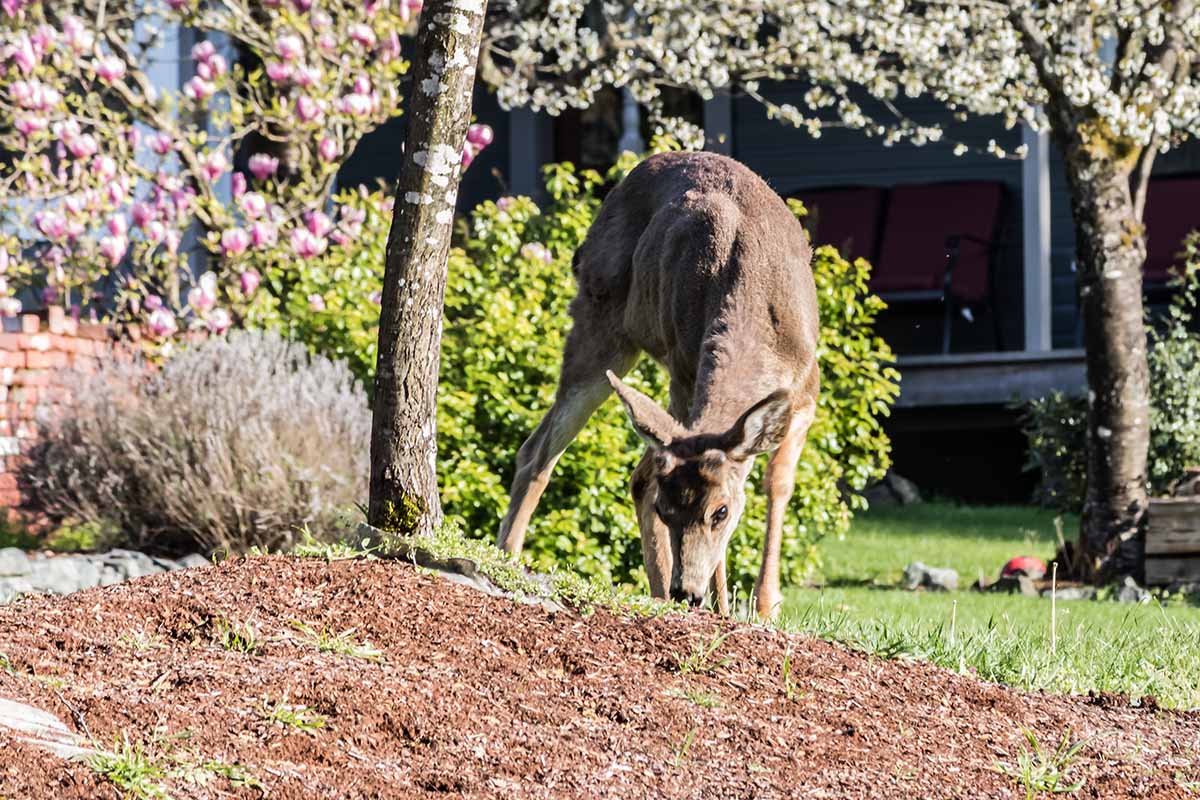
A mature tree is at no risk from browsing, but deer will make a meal out of leaves and young twigs now and then, and young trees could be slightly deformed.
Over time, the shape can be recovered through pruning, but you might want to put a small fence around young trees if you live in an area with lots of deer activity.
Scale might also be a problem, but it’s rare and these pests usually only infest trees that have been damaged or otherwise weakened. Our guide to scale can walk you through everything you should know.
Best Uses for Sweetbay Magnolia Trees
Thanks to their tolerance for swampy, boggy spots, you can use these trees near ponds and streams or in low areas where water tends to collect.
Don’t assume yours needs to be practically drowning to be happy, though. This species is drought tolerant once established.
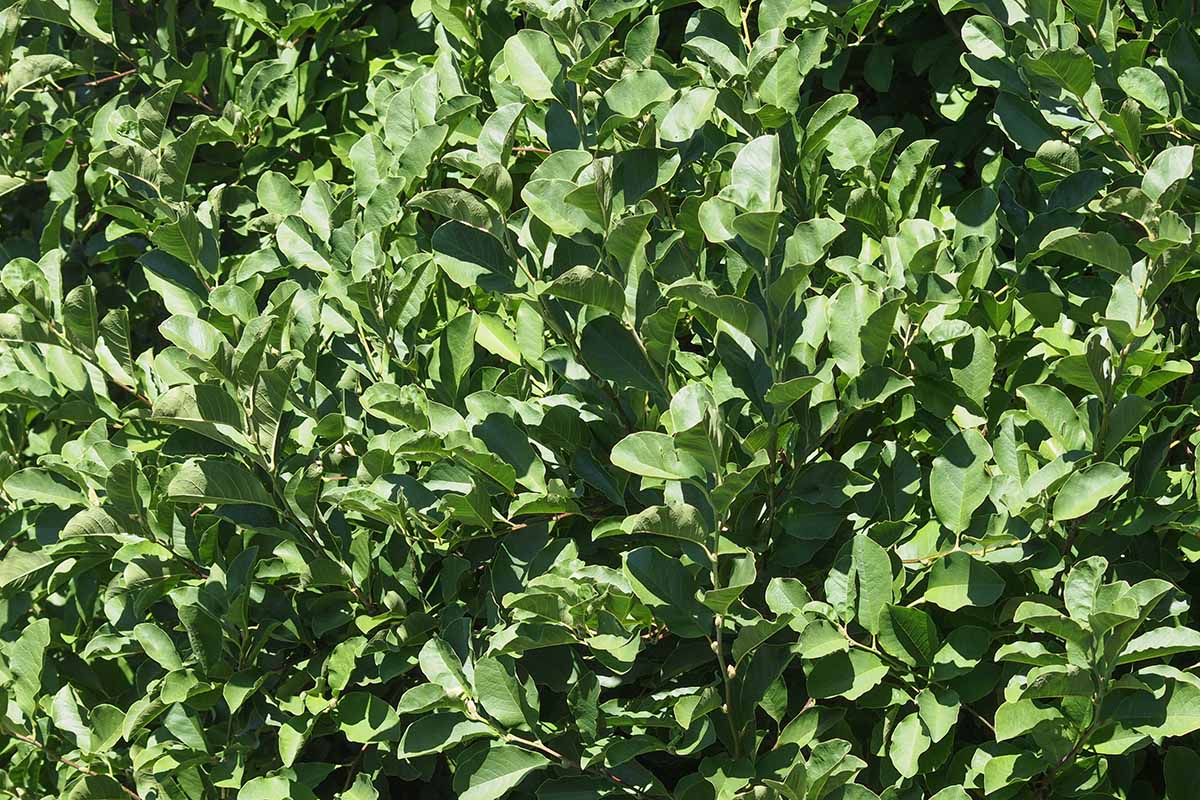
It grows well with bayberries, yaupon, dogwoods, chokecherry, sumac, snowbell, viburnum, ferns, pitcher plants, and sedges. Use it in a mixed shrub border or as a specimen.
You can also plant it near porches and patios because it won’t become overwhelming in size, and it will provide dappled shade.
Some magnolia species are prone to breakage, but this one is fairly resistant to wind damage.
Quick Reference Growing Guide
| Plant Type: | Deciduous or evergreen flowering tree | Flower/Foliage Color: | White/green |
| Native to: | Southeastern North America | Maintenance: | Low |
| Hardiness (USDA Zones): | 4-9 | Tolerance | Frost |
| Bloom Time: | Spring, summer, fall | Soil Type: | Loose, rich |
| Exposure: | Full sun to partial shade | Soil pH: | 5.5-6.5 |
| Time to Maturity: | 20 years | Soil Drainage: | Boggy/poor to well-draining |
| Spacing: | 10 feet | Attracts: | Bees, beetles, birds, butterflies, moths, squirrels |
| Planting Depth: | 1/2 inch (seeds), top of root ball slightly above soil line (transplants) | Companion Planting: | Bayberries, yaupon, dogwoods, chokecherry, hostas, snowbells, sumac, viburnum, ferns, pitcher plants, sedges |
| Height: | Up to 60 feet | Avoid Planting With: | Cactus, juniper, Russian sage |
| Spread: | Up to 25 feet | Uses: | Specimen, mixed border |
| Growth Rate: | Moderate | Family: | Magnoliaceae |
| Water Needs: | Moderate | Genus: | Magnolia |
| Common Pests: | Deer, scale | Species: | Virginiana |
How Sweet It Is
Sure, Southern magnolias stand out like the belles of the ball, but sweetbays are every bit as fantastic.
From their strong fragrance to their extended blooming season, plus their ability to thrive in swampy areas, white laurels have a lot going for them.

How do you plan to use yours? Which cultivar is your favorite? Give us all the details in the comment section.
There are lots more ornamental landscape trees out there to fill your yard with. If you’re looking for some ideas and guidance, read these articles next:
